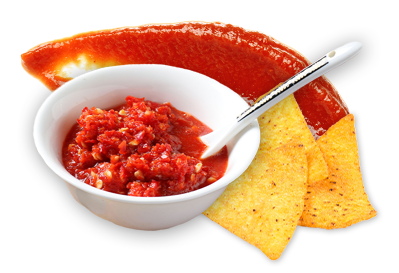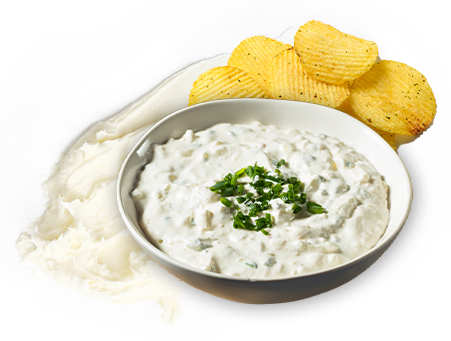Turbulent times, both financially and socially, have contributed to a continued rise in consumer in-home dining. Dips and spreads are gaining popularity as accents and amplifiers to snacks, meals, and appetizers.
Innovating with interesting, trending, functional, or indulgent flavors can help a dip or spread catch consumer attention as interest in the segment grows.
Visually, color can help tie a flavor profile in and create a cohesive taste experience. When formulating with natural colors in dips and spreads, developers should keep in mind a few key technical considerations.

According to Mintel, the most popular dips or savory spreads among consumers are salsas, cheese dips, creamy dips/spreads, hummus, guacamole, and meat or bean dips. Most of these will function quite similarly with respect to color incorporation.
Acidity of the product is going to be a major factor when considering color solutions. Some colors thrive in acidic environments, while others prefer more neutral applications. For example, if you are targeting a red hue, anthocyanins will be a great option in low pH projects, while higher pH will demand a solution like beet. In cheese dips, Sensient’s acid-proof annatto offers a wonderful yellow-orange hue that remains stable in low pH environments.


Color ingredients can interact with other ingredients in a recipe, such as emulsions or flavors, in ways that may improve or destabilize their performance. Color experts can offer guidance on ensuring the success of a color in the final formula. This is particularly common in dehydrated products where water is added by the consumer, and a recipe needs to be stable both with and without that hydration.
If a dip or spread is packaged in transparent containers or those with clear windows, as many are, light stability will play a role as well. While almost all color solutions, both natural and synthetic, are light-stable, a few popular options like turmeric may fade over time under light exposure. Light-stable solutions like beta carotene may be used instead.


Although titanium dioxide has long been the go-to solution for whitening and opacity across almost all food and beverage applications, including dips and spreads like tahini, recent consumer and regulatory movements have placed pressure on brands to find alternatives. Clean label white solutions like the Avalanche™ portfolio offer developers bright whites for dips and spreads without titanium dioxide.
Both maximum temperature and duration of heat processing can impact color performance. In cream cheeses, a batch may heat for many hours and take a similarly long time to cool down, and any color used will need to survive that temperature change. Sensient’s extensive range of heat-stable solutions from Watermelon-Rose™ to Butterfly Pea Flower ensures that you can achieve the entire rainbow in dips or spreads with heat steps.

If you still have any questions about formulating with color, please reach out! We’d love to help. If you’re ready to jump into development, request a color sample from our rainbow here!